Topic Choices
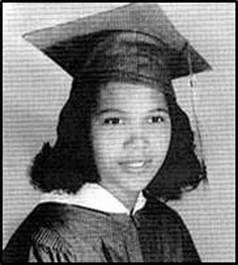
GROUP #1 - Barbara Johns and the 1951 Student Strike: Barbara Johns was the sixteen-year-old Junior who organized the student strike at R.R. Moton High School. She formed an inner circle of student leaders and spent weeks secretly organizing the demonstration. On April 21st, 1951, she took to the stage of the school auditorium and spoke fervently about the educational inequality that she and her classmates were subjected to. Her speech ended with a walkout and student strike that lasted two weeks. When the white superintendent of schools refused to respond to the students’ demands, Barbara contacted NAACP attorney, Oliver Hill and appealed to him for legal representation. The NAACP agreed to take the students’ case on the condition that they change their demand from equal facilities to the integration of public schools in general. Despite strong support for the students’ case from Farmville’s black community, Barbara’s parents feared for her safety and sent her to live with her Uncle Vernon in Montgomery, Alabama. This presentation will be given from the very stage where Barbara Johns stood when she called forth the student strike of 1951! Your group should address her involvement in the strike, as well as the various life experiences that led her to take such bold action. In addition to information available online, The Girl from the Tar Paper School by Teri Kanefield is an excellent source on Barbara Johns and her role in leading the student movement in Prince Edward County. Simple Justice by Richard Kluger also has a chapter titled “Stick with Us” that details the origins of the student strike and its evolution into a court case. The documentary, Strike: a Call to Action dramatizes the student strike and gives viewers a glimpse of the speech that Barbara Johns gave to her classmates from the auditorium stage at R.R. Moton High School.
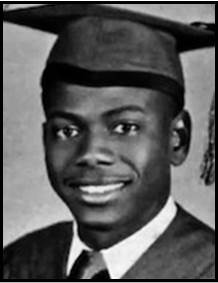
GROUP #2 = John Stokes and the 1951 Student Strike: John Stokes was the President of the Senior Class at R.R. Moton and one of the co-planners of the 1951 student strike. He was a leading voice on the strike committee and helped coordinate efforts to maintain the student movement in Farmville. He later served as a plaintiff in Brown v. the Board of Education. Following graduation, Mr. Stokes served two years in the U.S. Army and later graduated from Virginia State University. He went on to become a teacher and administrator in Baltimore City Public Schools. Mr. Stokes has dedicated his retirement to speaking about the Farmville student movement and the subsequent court case that emerged from Prince Edward County. This presentation will be given from the former site of the bleachers on the grounds of R.R. Moton High School where Barbara Johns first revealed her plan to John Stokes and his sister, Carrie. Your group should address his involvement in the student strike as well as the various life experiences that led him to take such bold action. In addition to information available online, Students on Strike: Jim Crow, Civil Rights, and Me is Mr. Stokes’ autobiography about his experiences growing up in Prince Edward County. He is also featured prominently in two documentary films, Farmville: An American Story, and Mr. Stokes’ Mission.
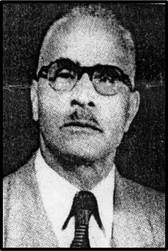
GROUP #3 = The Vernon Johns Gravesite in Darlington Heights: Vernon Johns was Barbara Johns’ uncle. He was born in the Darlington Heights area of Prince Edward County in 1892. He was an accomplished minister and a respected theologian in the Baptist Church. His Christian principles largely informed his civil rights activism and many of his sermons addressed the immorality of segregation and discrimination. Despite false rumors of his involvement in the R.R. Moton student strike, he was likely a powerful influence over his niece, Barbara. This presentation will be given at his actual grave site that is located on land that he once owned. Your group should address his life and legacy as a minister and civil rights leader. In addition to information available online, Parting the Waters: America in the King Years, 1954-63 by Taylor Branch is an excellent source of information related to Reverend Johns. The Vernon Johns Story is a made-for-T.V. movie that stars Oscar-winning actor, James Earl Jones as Reverend Johns.
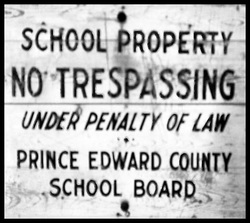
GROUP #4 = Prince Edward Academy: Segregationist whites vowed to prevent any form of integration in the South. On February 24, 1956, Virginia Senator Harry F. Byrd declared a policy of “Massive Resistance” and encouraged Virginia’s General Assembly to pass state laws in order to prevent integration. Under Byrd’s direction, the state legislature passed a law that cut all funding to school divisions that attempted to integrate. New laws also empowered the Governor with the ability to forcibly close down such school divisions. The NAACP filed suit in federal court in order to challenge the constitutionality of the Massive Resistance legislation. The federal court upheld the Brown decision and ordered a number of Virginia school divisions to begin the process of desegregation. Governor Lindsay Almond responded by closing down schools in Charlottesville, Norfolk, and Warren County. These school divisions reopened in 1959 after the State Supreme Court ruled the Massive Resistance laws to be unconstitutional. Despite the compliance of the state government, the Prince Edward Country Board of Supervisors still refused to integrate, and they closed down their school division by refusing to allocate funds for its operation. In conjunction with these events, wealthy segregationists established the Prince Edward Academy as a private school for white students. The county school system remained closed for five years, and black students were denied the right of education. Despite the reopening of public schools in 1964, Prince Edward Academy continued to operate on a segregated basis until 1986. After years of financial struggle, philanthropist John B. Fuqua donated over $12 million dollars in order to transform the school from a segregation academy into a modern institution of private K-12 education. The group researching this topic should address the establishment of Prince Edward Academy in 1959, the gradual decline of the institution during the 70s and 80s, and its transformation into the Fuqua School of today. In addition to information available online, Something Must Be Done About Prince Edward County by Kristin Green is an interesting biographical account by a former graduate of Prince Edward Academy. They Closed Their Schools by Bob Smith is also an excellent source that documents the school closures and the establishment of the academy.

GROUP #5 = Reverend L. Francis Griffin and the First Baptist Church: Known as the “Fighting Preacher,” Leslie Francis Griffin was the Pastor of Farmville’s First Baptist Church. He strongly supported the Moton strike and met with the student leaders in the basement of his church. He also helped coordinate their efforts with the NAACP and later became the president of the Farmville chapter of this organization. Reverend Griffin became the undisputed leader of the black community as the student strike evolved into a thirteen year struggle for equal education. Dr. Martin Luther King Jr. described Griffin "as a giant among men" and "a modern social prophet." Prince Edward County Schools were finally forced to reopen on an integrated basis in 1964 as a result of the Supreme Court ruling in Griffin v. County School Board of Prince Edward County - the plaintiff is this case was Griffin's own son, Skip. Reverend Griffin later stated, "I'm certain that by remaining adamant through the long struggle, Prince Edward blacks saved public education in this nation." This presentation will be given at Reverend Griffin’s former pulpit – the First Baptist Church on the Main Street of Farmville. Your group should address his life and legacy as a civil rights leader, with particular focus on his leadership during the school closures of 1959-64. In addition to information available online, They Closed Their Schools by Bob Smith prominently features Reverend Griffin’s story.
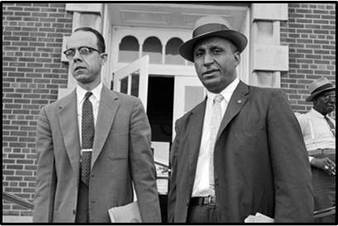
GROUP #6 = NAACP Attorneys Oliver Hill & Spottswood Robinson: Oliver Hill and Spotswood Robinson were passionate civil rights attorneys who built careers battling segregation within their native state of Virginia. As law students at Howard University they had been classmates and colleagues of Thurgood Marshall. A month after the initiation of the R.R. Moton student strike, Hill and Robinson filed the case of Davis v. County School Board of Prince Edward County. After defeats in various state courts and federal district court, they appealed to the U.S. Supreme Court. The case was later consolidated with four other school segregation cases, and it went before the Supreme Court in 1954 as “Brown v. the Board of Education.” This presentation will be given in the basement of Farmville’s First Baptist Church – the location of secret meetings between the Moton students, Reverend Griffin, and the two attorneys. In addition to discussing the role that Oliver Hill and Spottswood Robinson played in Farmville, your group should address the legal strategy that was devised by the NAACP to use the 14th Amendment to overturn Plessy v. Ferguson. It is important to note that the initial demand of the Moton students was equality and not integration – the NAACP convinced them that the former was not possible without also insisting upon the latter. In addition to information available online, Simple Justice by Richard Kluger has a few chapters dedicated to the Prince Edward case.
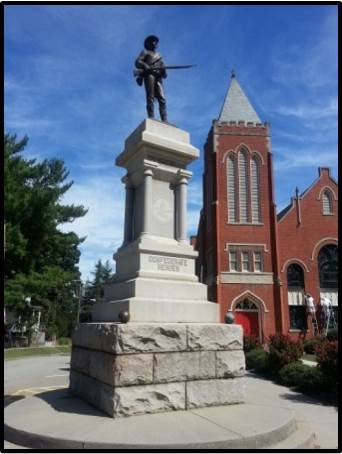
GROUP #7 = Massive Resistance and the Defenders of State Sovereignty: Two months after the Brown decision, a group of segregationist politicians and white businessmen formed the first chapter of the White Citizens’ Council (WCC) in Indianola, Mississippi. Members of the WCC used their political and economic power to prevent integration and black independence in the South. The WCC soon spread throughout the Deep South and became one of the primary organizations in defense of white supremacy and racial segregation. Dependence on the white power structure meant that any black citizen who challenged the status quo risked eviction from their homes and the loss of their jobs. One WCC member said that they aimed to “make it difficult, if not impossible, for any Negro who advocates desegregation to find and hold a job, get credit, or renew a mortgage.” A very similar group was formed in Farmville, Virginia known as the “Defenders of State Sovereignty and Individual Liberty.” This group was strongly supported by Senator Harry F. Byrd, and thousands of Defender memberships were filed throughout the state. The “Defenders” played a central role in raising the funds to construct the whites-only Prince Edward Academy in 1959. The Defenders actually took their name from the Confederate Soldiers Monument in Farmville (pictured on the left). Etched in the granite pillar underneath the bronze statue of a Confederate Soldier, it states, "Defenders of State Sovereignty." This presentation will be given in front of the actual monument located on High Street across from Longwood University. Your group should address the campaign of Massive Resistance and how these policies attempted to prevent the integration of public schools throughout Virginia. In addition to exploring school closures by the State, your group should also focus on how this subsequently led the Prince Edward County Board of Supervisors to shut down its school system from 1959 to 1964 – the longest school closure in U.S. History in order to prevent integration. In addition to information available online, They Closed Their Schools by Bob Smith is a book by a journalist who covered the school closures in Prince Edward County. Cradle of America: Four Centuries of Virginia History by Peter Wallenstein also has a few chapters that address the Massive Resistance campaign in Virginia.
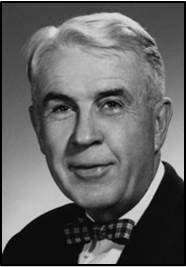
GROUP #8 = Dr. C.G. Gordon Moss and Longwood University: Dr. Moss was as a Professor of History at Longwood College in Farmville. He was the department chair from 1947 – 1960, and Dean of the Faculty from 1960 – 1964. Despite criticism from his Longwood colleagues and the Farmville community, Dr. Moss publically criticized the school closings and spoke out in favor of integration. He declared, "I’ve been teaching American history for forty years. I’ve been teaching that democracy and social justice are the greatest ideals of the American nation. I’d be a traitor to the thousands of students I’ve taught if I didn’t take a stand for these ideals when the opportunity comes." This presentation will be given inside of Ruffner Hall on the campus of Longwood University. In addition to teaching classes in this building, it was also home to the History Department and Dr. Moss’s personal office. Your group should not only tell the story of Dr. Moss, but you should address how the rest of the University responded to the school closings. Longwood recently issued an institutional apology for its "conspicuous silence" during the civil rights era. In addition to information available online, They Closed Their Schools by Bob Smith discusses Dr. Moss in detail.
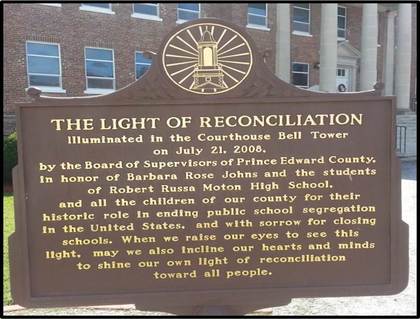
GROUP #9 = The Light of Reconciliation: The school closures in Prince Edward County, Virginia represented the greatest resistance to public school integration in the history of the United States. An entire generation of black students were denied education for five years while segregationists established the Prince Edward Academy as a private school for whites. Despite the deep scars this inflicted upon the community, many black and white residents have recently sought to reconcile the tragic events of this troubling past. For example, R.R. Moton High School has been transformed into a civil rights museum that memorializes the student strike and the thirteen year struggle for an equal education; the Farmville Herald that once erupted with segregationist vitriol now editorializes in support of state scholarships for former students impacted by the school closures; the Prince Edward County Board of Supervisors that once closed schools, issued an apology and erected a “Light of Reconciliation” on top of the county court house in 2009. This presentation will be given on the very court house grounds where this apology is inscribed on a historic marker (pictured above). Your group will be responsible for discussing how the people of Farmville have started to embrace this history and learn lessons from it. A central source for your research will be The Road to Reconciliation: A Civil Rights Reparations Story in Prince Edward County, Virginia by Ken Woodley - Mr. Woodley is the former editor of the Farmville Herald who first proposed the concept of the Light of Reconciliation. It would also be a good idea to conduct interviews with black and white residents that currently live in the community. These community members have likely witnessed these changes, and can offer personal testimony regarding the extent of social progress.
